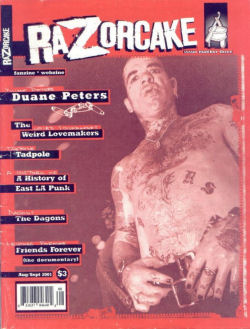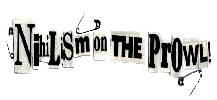| PROLOGUE We get to the gig around 9:30 p.m. We�a pack of 12 or 13 kids with spiked hair, faded denim jackets covered in a chaotic splash of color and band logos, and assorted cases of beer in tow�walked more than a mile through neighborhoods often hostile to people like us to pay $3 and stand in a backyard filled to capacity, get drunk and raise a little hell as our friends line up in varying band formations every half hour or so and tear through their sets, their efforts lit by a single lamp strategically placed on the makeshift stage at the back wall of the house. After a little searching, we find the other heads from the neighborhood, who came to the gig in two carloads, in the far corner of the yard with a keg between them. �We� are collectively the punks from City Terrace, but we are by no means alone in the backyard. Kids from Montebello, Huntington Park, Highland Park, South Gate, Alhambra, El Sereno, Monterey Park and other areas have also come out tonight to see the Stains, who are rumored to be making a rare appearance. I make my way through the crowd, can of Bud in hand, place my very scrawny self squarely in front of the stage and begin heckling the members of Side Effects, who are friends from Whittier. �You guys are too stupid to play and your drummer is a gimp,� I shout at them through the din of tuning instruments. Behind me, another critic chimes in with �Go back to Whittier you has-been scumbags.� Their singer smiles. �Glad to see you guys, too,� he deadpans into the microphone. Their drummer four-clicks and, as the band begins their first song, the backyard erupts into the sea of ritualized violence we call dancing. Many fall to the ground, but are quickly picked up by watchful friends and relatives. Somewhere in the middle of the set, I make my way back toward the keg, parched, sweaty and loving every minute of the night. Two bands later, my brother informs me that he�s talked one of the bands into lending us their equipment and that we will be playing after Anti-Social, who are currently onstage. We find Scott, our singer, and make our way back toward the stage. Anti-Social finishes and we tune up the borrowed instruments. Scott introduces us as �just another band from East L.A.� and we begin our set amidst a hail of reciprocated insults from the members of Side Effects and a shower of wasted beer. East Los Angeles: A Primer �We�re the ones that have been neglected/ Conformity never accepted �.� � Black Jax East Los Angeles has long been sort of the bastard child of Los Angeles �proper,� which extends from the bridges that cross the Los Angeles River to the Pacific Ocean (officially, the eastern border of Los Angeles City is Indiana Street, which is in the heart of �East Los,� but, except for the LAPD, few Angelenos seem to acknowledge this fact). Everything on the eastern side of the river, pretty much since the beginning of the last century, has been viewed by the population on the Westside as either squalid, dangerous or simply someplace decent people would not be caught dead in, day or night. As a result, vast amounts of people on the west side of Los Angeles have, in their entire lives, never set foot in East Los Angeles. Conversely, much of the population on the east side of the river has regularly made trips over the bridges, serving as a source of cheap labor for the city�s businesses and more affluent residents. Contrary to popular belief, East Los Angeles has never been a solely Mexican area. While it has been identified as the largest Mexican city outside of Mexico, much of L.A.�s Japanese, Italian, Black, Jewish, Chinese, Russian and Central American, populations have also called parts of East L.A. home through the years. In fact, Los Angeles� noted Fairfax District was the result of the area�s Jewish community moving west from Boyle Heights following the influx of other minority groups into the area. The more inquisitive reader can find out more about the area�s history in the book East Los Angeles: Anatomy of a Barrio, by Ricardo Romo. On the whole, the general attitude of Westsiders toward East L.A. seems to be that, aside from �safe� areas like Pasadena and San Marino, it simply doesn�t exist as part of Los Angeles. Tourist guides that tout the virtues of Hollywood and Venice warn their buyers to avoid dangerous areas like East and South Central Los Angeles, especially at night, and when local publications like the L.A. Weekly and City Beat refer to the �Eastside,� they are actually referring to Silverlake and Echo Park, which are still west of downtown. It is true that places like East and South Central Los Angeles can be dicey areas, but they are no more hazardous than more celebrated tourist traps like Hollywood Boulevard or the Venice Boardwalk. While it is easy to blame the rest of the county�s aversion to East Los Angeles on the ominous specter of racism, and its origins were no doubt based on the dominant White population�s racist attitudes towards their non-White neighbors, I think it has since mutated into something less sinister over the course of generations. Gone are the days when the Mexican population, not allowed on the beaches, instead took their families to water-filled rock quarries and aqueducts with names like Marrano Beach and Sleepy Lagoon, but the aversion on the part of much of the rest of the county is still very much alive. While most of the population probably forgot long ago the overtly racist reasons why East L.A. was such a bad place to be, they have nevertheless retained the fear that was the end product of the racism. As a result, the efforts of Eastside artists, from painters to writers, actors to musicians, are rarely recognized. For every Los Lobos, Anthony Quinn or Vicky Carr, there have been a hundred Ruben & the Jets, Mestizo, Con Safos, and so on. Many bands found it nearly impossible to play outside of the neighborhoods and, as for playing a coveted club date in, say, Hollywood � forget about it. This bias is equally true of the Los Angeles punk scene. Most, if not all, of the L.A. bands that the average punker has heard of are from Hollywood, Orange County or the South Bay. Many East L.A. punk bands had a hard time getting gigs with their Westside counterparts in the early days, and things haven�t really changed much. East L.A. bands are still seen as somehow less �real� and are often dismissed as �taco punk� or some other stupid slight. One review of the local band Union 13 consisted of the reviewer trying to figure out how a punk band from LA. could exist without his knowing it, followed by a dismissal of them as some sort of made-up group the label owner concocted to cash in on the �Spanish Rock� craze sweeping the nation. In actuality, the group had been recording demos and gigging in East Los Angeles� backyard party scene years before the release of their first album. Early bands that did manage shows outside of East Los Angeles and released vinyl often had to rely on connections with the movers and shakers within the �real� L.A. punk scene. For example, East L.A. group The Brat�s debut EP, Attitudes, was released on Tito Larriva�s (of the Hollywood band the Plugz) Fatima label and the record�s lyric sheet was handwritten by X�s Exene Cervenka. Even worse, East L.A. music historians have been equally culpable for slighting the work of the area�s punk and underground bands. Every few years, some Chicano musicologist or music historian will try to put out the �definitive� history of the East Los Angeles music scene and, for the most part, their efforts are commendable. Once they get to the section covering the East L.A. punk and underground scene, however, their work is suddenly anemic. The two bands usually mentioned are the Brat and Los Illegals and, according to many of these books, serve as the alpha and omega of East L.A.�s punk scene � nothing before, after, or in between. If they do attempt to mention any other East L.A. punk bands, they find bands with ethnic names or members from other areas and try to lump them in with the others (e.g. the persistent tendency to place the Plugz or Chula Vista Chicano punk band the Zeros in with their East L.A. counterparts; the reference to Econochrist alter ego Chicano Christ in the book Land of a Thousand Dances). Despite others claims to the contrary, East L.A. has long been home to a large, vibrant punk and underground music scene, one as diverse and exciting as any of Los Angeles� more celebrated scenes, and it has somehow prospered despite virtually no radio airplay, precious few recorded works, almost no labels and a few short-lived clubs. Like many of its more famous counterparts, the East L.A. scene has long been comprised of many smaller scenes that freely intermingle with each other. Although elitism and infighting between bands, fans and scenesters are often in abundance, they have rarely impeded the basic tenet of the efforts of those involved, which was to have as much fun as possible by any means necessary. What follows is in no way an attempt to serve as a document of every punk band that has plugged in and made noise in a garage east of the L.A. River, nor is it to serve as some sort of �definitive history of a scene.� Rather, look at this long block of lettering as an introduction to a scene that was and is populated by a whole host of denizens that I�m willing to bet most never knew existed. I had hoped to include profiles of many more bands, but unfortunately was unable to do so due to friends who have been lost over time, those who have died, those afflicted with terminal flakiness or just a general lack of interest on the part of those I called to participate. Due to the dearth of related material on the subject, much of the information here comes from more than 20 years worth of memories spanning hundreds of parties, gigs and fights in assorted backyards, clubs, rented halls, living rooms and other subterranean hellholes. While it is true that I have played in many bands over the course of the last 20 years, the intent of this article is not an arrogant attempt to highlight my personal efforts as a musician. I know full well that my efforts are no more or less important than those of others. Punk was and is a hands-on type of subculture where everybody involved plays an active part, so as a result, much of the history of punk in East L.A. and my own personal history are interrelated. The reader will note that Los Illegals and the Brat are not represented here. While their exclusion is in no way intended to dismiss or disrespect their efforts, they�ve been the primary focus of all things �punk� in East L.A. long enough and have both been well covered elsewhere. Now it�s someone else�s turn. A Brief Personal Recollection of East L.A. Punk Life The first time I remember seeing the phrase �punk rock� was in a 1980 issue of Creem. I bought the magazine because of articles on the Pretenders and Devo, who at the time had replaced my prior fascination with Kiss and other related hard rock bands. The classified ads in the back of the magazine had repeated references to punk rock T-shirts, sunglasses and even an ad for a �punk rock,� one of many variations on the ridiculous pet rock craze that swept the United States in the late 1970s. I went to an alternative school (as in an �alternative form of education,� according to the hippies that founded the school in the �70s) in Highland Park. Like many of the kids who attended this school, my younger brother and I were bused there from where we lived, in our case an area of East L.A. called City Terrace. Through some of the other kids in school, I soon learned about punk and a whole world of bands I had no idea existed, bands with strange names like the Weirdos, Germs, Go-Gos, Flesh Eaters and Black Flag. I also learned of a radio station with some DJ named Rodney who regularly played these bands and my brother and I began listening to Rodney�s show every Saturday and Sunday night. The first punk group I ever saw was the Alperheads, a joke band named after a classmate who was one of the editors of Ink Disease fanzine. The bass player for the Alperheads was Shane White, who later became a member of the Rip Offs. If memory serves, the band practiced their three-song set only once � the night before their gig � and they played only that one show, which took place in our school�s recreation room. Two of their friends, who had snuck onto the campus just to see them, began pogoing, bouncing up and down to the beat, laughing the whole time. As the Alperheads crooned the mantra �We are young, we are bold, we are Alperheads/Nobody loves us but our mothers� to the three half-learned chords that made up the music, I couldn�t help but think that they were the worst band I had ever heard. Something about the noise they were making and the attitude with which they made it, piqued my interest. I didn�t begin wearing many of the stereotypical punk accoutrements until a couple of years later, but my involvement in the scene began not long after that show in the rec room. Although neither of us knew how to play an instrument, my brother and I started our first band sometime in the summer of 1981. My gear consisted of an acoustic guitar and, in order to make it �electric,� I took a cheap condenser microphone, wrapped it in toilet paper, plugged it into an old movie projector, and then shoved the mic into the sound hole of the guitar. The sound that resulted, besides the incessant feedback, was similar to two trains colliding in the middle of an earthquake. My brother screamed at the top of his lungs. We made tapes and gave them to friends. It was fun. A couple of years later, we borrowed some real equipment from an aunt, talked a schoolmate (a Chinese girl with no apparent sense of rhythm) into playing drums and played Dollar Night at the Cathay de Grande in Hollywood with Mad Parade, the Membranes and the Steps. I also began writing for friends� fanzines, not to mention frequent failed attempts at starting my own. My brother and I soon learned that being a punk in East L.A. was no spring walk in the park. More often than not, it involved suffering through catcalls, incessant hassling from parent, police and principal alike, running from people bent on our destruction, fighting, beatings, concussions and bleeding. Soon enough, though, we found other punks in the neighborhood and we all began hanging out together and going to shows. Together, we all started bands, supported each others� efforts, wrote for each others� magazines, ingested staggering amounts of illicit substances and malt beverages, and put on our own shows. The Written Word Of the many fanzines that popped up over the years, the two that are best known by punks outside the East L.A. area are Ink Disease and Pure Filth. Both were very influential, outspoken, sometimes brutally honest in their likes and dislikes and often painfully funny to read. As a result, both also had more than their share of both worshippers and enemies. Although started by Rachel Siegel, Antonio Lopez and Ivan Morley, Ink Disease was headed for the majority of its existence by the duo of Thomas Siegel and Steve Alper. Based in the Mount Washington area of Northeast L.A., the majority of its coverage was more national in scope, but the occasional feature could be found on their friends� bands, like Armistice and Truce. In its early stages, Ink Disease was similar in style to many other fanzines of the time, with chaotic layouts, poorly reproduced photos, and the like. In addition to interviews with bands and record reviews, one could find reviews of old movies that were playing at Pasadena�s Rialto Theatre, copy clipped out of various newspapers, �The Adventures of Punk and Pop� comics and Brady Rifkin�s bumper sticker reviews. As it gained popularity (at one point rivaling Flipside), its layouts and text became more coherent and the general vibe of the fanzine became considerably more focused. Ink Disease continued into the 1990s, but it began reaching the newsstands only sporadically, first seemingly at quarterly intervals, then almost annually, and it finally disappeared. Pure Filth was an entirely different beast. The brainchild of Shane White, Ralph Balcarcel and the enigmatic Carl Bellows, Pure Filth was unashamedly regional, outspoken to the point of insulting even their friends, elitist, crude and funny as hell. The only thing painstakingly laid out was usually the cover, which featured women whom the editors deemed sexy. Past that, though, the reader was left to his/her own devices to figure out what was going on. Following an entirely handwritten first issue, the magazine�s text was typeset on an old typewriter with missing keys, laid out in whatever direction seemed interesting to the person laying it out, and then Xeroxed en masse. The bands interviewed were usually unknown outside a small circle of people, and the interviews themselves often quickly degenerated into recordings of situations having nothing to do with the bands� music. Typical questions ran along the lines of, �Some people get up at the crack of dawn. Whose crack do you get up to?� As for as the magazine�s other contents, the reader could wade through Ralph�s semi-autobiographical �Adventures of the Hookermeister;� �On Skinheads,� a list of their friends who either were or would soon be suffering from male pattern baldness; a sometimes painfully personal gossip section; diatribes on how Flipside and punk rock in general sucked; reviews of literally anything; and assorted toilet humor comics. When Ralph, Shane and his brother Jason packed up their band and moved up to the Bay Area, they took Pure Filth with them and continued to put out issues until it became a little more popular than they were comfortable with, at which time they packed it in and Shane began writing reviews for Maximum Rocknroll. There were, of course, other great fanzines from East Los Angeles, including Multiplication of the Typical Joe, Outcry and Thrasher�s Digest, most of which started out strong and then sort of petered out after a few issues. All, however, were essential in helping to inform those few readers inside and outside the area of what was going on in the neighborhoods. Backyard Shenanigans Although the occasional punk club did pop up in East Los Angeles � Stage One, Bit of New York, Mendiola�s, Brooklyn Theatre and the Tropico, to name a few � most were short-lived. The club that survived the longest was the Vex. Begun by Los Illegals vocalist and muralist Willie Herr�n and later run by Joe �Vex� Suquette, the Vex began on the second floor of Self-Help Graphics, a noted East L.A. arts center. In its early incarnation, the Vex coupled Westside punk and underground bands with their Eastside contemporaries, as well as poets and performance artists and soon became the focal point for the punk scene in Los Angeles County. When fans attending a Black Flag show rioted and effectively destroyed the venue, it was forced to move around the area for various reasons before finally settling in an old discotheque in El Sereno, where it lasted until 1984, when it closed after someone was stabbed. The lack of a steady club scene in the area, not to mention the virtual impossibility of most bands obtaining a slot at any of Hollywood�s clubs, led to the rise of the backyard party scene. The mechanics were simple: Find someone with parents who were either gullible or out of town, make flyers, pass them out at larger shows at the Olympic Auditorium, Fenders Ballroom and anywhere else you could, show up at the house with a couple of kegs of beer, play, dance, fight, leave when the cops crashed the party and find someplace else to finish the beer, usually an alley close to home. For three bucks or less, one could see, depending on when and if the cops showed up, anywhere from one to eight bands play. A steady network of backyards began to build, places with names like Bird and Cornwell, First and Velasco, Beastie�s Pad, Boo-Boo�s House, Joe�s Pit, Flipper�s Pad and the Dustbowl (so named because a stifling cloud of dirt would rise every time a slam pit started). Soon one could find a place to go on any given day of the weekend. Many of the places lasted years and the parties themselves were usually wild, drunken, sometimes violent affairs. Most, if not all, of the bands got paid, either with money or lots of free beer. Few complained about this arrangement. Shut Up and Play As with any other scene, East L.A. bands were plentiful and usually short-lived. Some were brilliant, others were absolutely terrible, but all were respected and encouraged to make as much noise as possible. The bands were also very incestuous, and it wasn�t uncommon for one person to be in four or five different bands at the same time with three other people, all in the same predicament. Few of the bands ever saw the inside of a studio and even fewer ever released a proper record. Most instead made demo cassettes on either a four-track recorder or a ghetto blaster, copied them onto cheap tapes and passed them out to friends or sold them. A handful of other would-be music moguls sometimes took these demos, picked a few songs from each tape, recorded them onto other cheap cassettes and passed them off as compilations. The following is an incomplete list and brief descriptions of some East L.A.-area bands area active from 1981-1990. Please note the emphasis on incomplete. A.D. Do � An early to mid-�80s Highland Park group, this band included Benny Siegel and Morgan Hunt, both of whom were responsible for Multiplication of the Typical Joe fanzine. Inspired by the same sense of humor that permeated their fanzine, their early recordings were of a �fun� nature, but as the influence of DC hardcore bands like Minor Threat and Faith became more prevalent, they developed a harder edge. Aside from a few garage demos, their only other known appearance was on the Flex Your Mom compilation cassette, of which there were less than 30 �legitimate� copies. Morgan moved to Humboldt County, where he was a member of the band Letterbomb and, as of last contact, worked as a glass blower. Anti-Social � Originally a non-band that would get their name on flyers and then not show up to play, �because we�re anti-social.� Heavily influenced by Bad Religion before it became fashionable, the band was started by guitarist Manny and his brother Charlie after Manny quit Copulation. They released a couple of demos and garnered a pretty sizable following before throwing in the towel. During the 1990s, Manny played in the Deutschmen, Revolution 9 and for a time in Media Blitz. Anti-Social has recently reformed, is gigging again and can be found at www.myspace.com/antisocialpunk. Armistice � One of LA�s early �peace punk� bands. Taking many of their political cues from Crass, Crucifix and the like, they tried to get LA�s notoriously apathetic punk scene to care about something. Noteworthy members included drummers Aaron (of kiddie punk band Mad Society), Sard (later in Black Jax) and guitarist Ivan Morley (later of Iconoclast and currently a noted artists who uses non-traditional media as �paint�). Their only known recordings were a live demo recorded at Roxanne�s Club and some tracks on the Rock for the People of Highland Park compilation cassette. Black Jax � The best thing ever to come out of Monterey Park. Their sound was a mixture of English punk rock circa 1977 and early �80s Orange County hardcore, and they didn�t have a bad song in their set. Singer Pogo commanded the stage like a pro, emoting every line while bouncing across every inch of the stage. Although the band officially broke up in 1986, they have reunited occasionally for gigs over the years, and Pogo fronted an all-new lineup in the mid �90s. A collection of two old demos was legitimately released in on disc in 2001 by Wankin� Stiphs Records. Bloodcum � Two members of this band were supposedly related to members of speed metal band Slayer (in actuality, only bassist John Araya, brother of Tom, is), so they were often facetiously referred to as the �Slayer Brother Band.� The early work of this Huntington Park band was aggressive hardcore and, although they later introduced more of a metal influence into their sound, they managed to retain their punk edge and a sense of humor, as evidenced by songs like �Harassment By Farm Animals.� Over the course of their initial four-year run, Bloodcum released a couple of 12-inch EPs on Wild Rags Records and a couple of demos. From the mid-90s until 2002, guitarist Robert Tovar played with Blues Experiment, a band affiliated with L.A.�s �Chicano Groove� scene, while other guitarist George Hierro joined members of FCDN Tormentor in Out of Reach. John Araya and Our Band Sucks guitarist Gabriel Bucanegra played together for a time in the band Dogmatic. Like many of their peers, Bloodcum reformed in recent years (although without John Araya, who now lives in Canada and is playing with the band Thine Eyes Bleed), are out gigging again and can be found on MySpace at www.myspace.com/bloodcum. C.O. (Conscientious Objector) � An ultra-hardcore thrash band featuring the infamous Batman on vocals. Their sets often sounded like a roar of noise with only brief stops to let the audience know that they were beginning a new song. C.O., to the best of my knowledge, only recorded one demo and rumor has it that Batman has become pastor at a Christian church after years of living a very dangerous life. The Chainsaw Blues/the Fingers � The Pure Filth house band(s). Chainsaw Blues was originally a punk rock alter ego of sorts to the band La Triste, but following the departure of guitarist Craig Tyron, the inclusion of Plain Agony singer Tito Lopez and bassist Raul �Ralph� Balcarcel, and Shane White�s introduction to Billy Childish records, the band rapidly became connected to the then-burgeoning garage punk scene of the late-80s/early-90s. After a year or so, the personnel shuffled, Brady Rifkin was given vocal duties and the band was re-christened The Fingers. Later, Brady was booted out, Ralph became the singer and Becky Minjarez took up bass chores. When Becky quit to become a mom, the Fingers became a three-piece unit with drummer Jason White handling vocals. After gaining considerable popularity outside of East L.A., the band moved to San Francisco and promptly broke up. Shane and Jason joined the Rip Offs and the rest, as they say, is history. Chainsaw Blues� recorded output consists of one demo and a 7-inch EP. The Fingers released at least three 7-inch EPs, and recent Internet rumors hint of a possible anthology CD in the works. Circle One � One of East L.A.�s best-known, best-documented and most controversial groups. Singer John Macias was a very charismatic figure in the L.A. punk scene whose love for Jesus, hatred of police and unflagging dedication to hardcore both rubbed more than a few people the wrong way and attracted a rabid following/gang, known as the �Family.� Their music, however, with its frenetic beats and John�s meticulous efforts to actually sing, was undeniably powerful. Circle One�s vinyl appearances are many, including two albums, assorted compilation appearances, one 7-inch EP and, most recently, the Are You Afraid? CD on Grand Theft Audio, which couples their first album with live tracks, various demos and compilation cuts. Guitarist Mike Vallejo has since been in seemingly nearly every hardcore band from L.A. to Oxnard and currently runs a record store, Feedback Records, in the San Gabriel Valley. Various other members have been in Fluf, Fifi, Black Jax and Corpus Delecti. Police on Santa Monica Pier, sadly, shot John to death in the early 1990s. Circle One recently reformed, with � of the Patterns of Force lineup and a new singer and, in addition to steady gigging, is planning to release a new album. More information can be found on their MySpace page at www.myspace.com/circle1. Crankshaft � Another well-known group led by the legendary Lino Lousy. Lino�s decidedly non-PC lyrical content (odes to �new wave homos,� massacre killers and armies of the dead) no doubt caused many an eyebrow to raise (not to mention destruction of punk records by irate parents), but their metal- tinged hardcore was top-notch. Most of the band�s vinyl output consists of tracks on various Mystic Records compilations, three cuts on Smoke 7�s Sudden Death compilation and a host of demos. Lino is doing a long prison stretch these days, but some of the other members are keeping the band alive via their MySpace page, www.myspace.com/linoscrankshaft, where one can find more information about the band. The Dog�s Breakfast � An early �bedroom� group consisting of Jim Vavrik, Shane and Jason White. They recorded one known demo, which dances a fine line between early punk rock minimalism and flat-out noise. Three tracks from the demo, �V.D. in Your Eye,� �Destroy� and �The Children Don�t Play� appeared on the Flex Your Mom cassette compilation. FCDN Tormentor � From Highland Park circa the mid-1980s, these guys were early purveyors of what would become known as black metal. The �FCDN,� placed at the beginning of their name to differentiate them from another band with the same name, stood for �Fuckin� Catastrophic Destructive Noise,� and the description definitely fit. Their sound was loud, fast and featured the same strangled-cat vocals still popular today. They put out at least one demo and continued to play shows well into the 1990s. Drummer Ralo went on to play in No Comment and Blues Experiment and now plays with Ollin. Fish Head � Formed in the late �80s/early �90s, Fish Head married the death rock of bands like the Bauhaus to blues and hardcore punk and came up with a sound all their own. Song subjects ranged from Manson-esque fantasies to hanging hippies to telling a girl�s parents in gory detail what sex with their daughter was like. They quickly began to garner notoriety outside of the neighborhood, but after drummer Randy Rodarte moved to Berkeley, attempts to keep the momentum going with new drummer Guy failed and they called it quits, with all but John continuing under the name of Bluff Road. The band recorded one demo, a live cassette recorded at a 4th of July party exists, and a few performances were videotaped, and that�s pretty much the sum of their recorded output. A single was allegedly scheduled to be recorded by the Plugz� Tito Larriva and released on Flipside Records, but nothing ever came of it. Singer John is married and has two kids. Randy went on to drum in the Tumors for a time, and continues to this day as one of the only original members left in the band Ollin. Bassist Ralph was booking punk shows at the Tropico Club in East L.A. at the turn of the century. Later drummer Guy still jams with his brother on occasion. Guitarist Joey is lost in the void. The Fuckin� Assholes � The fact that none of the members of this band could really play their instruments didn�t stop them from playing many a backyard show. Their sets usually consisted of singer Chris screaming about being a teenage alcoholic or repeating the phrase �You�re just a caca head� repeatedly while the rest of the band flailed on their instruments in wild abandon. After a while, one of the members would walk off mid-set to get a beer and someone from the crowd would go up and play. The band recorded two known demos. Most of the members eventually learned to play and went on to Butt Acne, Peace Pill and Fish Head. Hawaii�s Hardcore � From the ashes of No Mind Asylum came this, Highland Park�s premier straight edge band, although few (if any) of their songs had anything to do with straight edge. The members performed in Hawaiian shirts and had crossed palm trees drawn onto their hands instead of the stereotypical �X.� Song subjects ranged from biographies of horny old movie stars to hating peace punks to loving Madonna. One demo was recorded and tracks from it were released on the Rock for the People of Highland Park and Flex Your Mom compilation cassettes. Shane White and Craig Tyron went on to an incarnation of Laughing Matter, which morphed into La Triste. Guitarist Steve Stewart moved to Spokane. Singer Joe Henderson went on to write for Flipside and now works as a medical malpractice defense attorney. HCOT/Copulation L.A. � Without a doubt, one of East L.A.�s best hardcore bands. The name Hot Cum on Tongue was shortened to HCOT, then changed to Copulation, and when the band found out there was a European band the same name, they added �L.A.� to avoid potential confusion. Bassist/singer Johnny �Boots� Rodriguez and drummer Frank, along with a revolving door of guitarists, laid out some solid songs that came an went in a blur of anger and desperation. After Frank eventually left the band, Boots tried to keep things going, but it eventually sputtered out and he joined the Thrusters, Plain Agony and a later lineup of the Black Jax. The band recorded numerous demos and was scheduled to have some tracks on the aborted Flex Your Burrito cassette comp. Anti-Social performed two Copulation tracks, �Tina Tina (renamed �Baby�)� and �What a Drag,� on their first demo, much to the consternation of Boots. Human Retch/Six Gun Justice/Butt Acne � Human Retch was the name that we gave the unskilled noise that was first foray into the world of music that brother and I made. Following the inclusion of a drummer, the name was changed to Six Gun Justice and survived two shows�a �Dollar Night� at the Cathay de Grande and a very small slumber party for seventh-grade girls for which we got paid a bowl of spaghetti each. After another name change, this time to Butt Acne, the band went through a succession of lineups before finally settling on my brother, renamed �John Justice� by this time on drums, Scott Rodarte from the Fuckin� Assholes on bass and myself on guitar. This lineup lasted into the 1990s when performances became fewer and Scott moved to Berkeley for a few years. Aside from a legion of demo tapes, the most recent from 1998, Butt Acne�s only �official� output was one side of a split cassette with Glendale band Voice of Authority, which was released by a Chicago tape label in the mid-�80s. The band members that floated through Butt Acne went on to join such bands as Fish Head, Tumors, Peace Pill, Ollin and Mad Parade. Insurrected State/No Church on Sunday � Insurrected State was fronted by Sergio, a man who frequently tested the boundaries of how much alcohol a person was capable of drinking. Often times he would pass out cold in the middle of a set with the band still raging on behind his inert body. The sound of the band itself was a sort of marriage of the primal approach of bands like Crass and the Mexican hardcore of bands like Atoxxxico and Soluci�n Mortal. Once Sergio was sacked, the band recruited Art Mu�oz to handle vocal duties, developed a stronger political bent to their lyrics, changed their name to No Church on Sunday and became much more charismatic and inspiring. The band recorded numerous demos. Following the band�s breakup, guitarist Julio formed Golpe de Estado, which put out a couple of EPs. Art is married with kids, but still finds time to go to gigs regularly and has played bass in numerous bands, including Ollin, Bad Chile and Tumors. One of No Church on Sunday�s numerous drummers moved up north and joined some really popular Gilman Street hardcore band. I have no idea what happened to Sergio. Loli & the Chones � Originally called Los Firmazos, Loli & the Chones were initially heavily influenced by Billy Childish and the same �60s lo-fi rock bands that played such a prominent part in the sound of bands like the Fingers. Unlike the Fingers, however, Loli & the Chones charged their sound with the aggression of early 80s hardcore, resulting in spurts of bile and venom that rarely lasted longer than their intros. Their sets were often intense affairs, one of the more notable occurring at a Hollywood club in the late �90s, where their bassist accidentally split his finger and tried to continue playing with blood flowing freely from the wound, down his bass and onto the stage. During their lifespan, Loli & the Chones released two singles and two albums before calling it a day. Drummer Michelle and guitarist Chris moved on to Bitchschool, then he went on to the Fevers and she to the Pinkz. Bassist Vince has apparently disappeared. The Looters � Comprised of 2/3 of the Dog�s Breakfast and 2/3 of Butt Acne, the Looters dedicated themselves to the glorification of pointless violence, Charles Manson and hallucinogenic substances. The �Flying Alvarado Brothers� (as once we were referred to in an issue of Ink Disease), John and I, supplied the vocals and guitars, respectively, while Shane and Jason White used their bass and drum talents to give the music the necessary propulsion. Although live performances were extremely rare, all were awash in blood and virulence, the three most memorable being the inaugural �Joe�s Pit� gig (which ended when all the windows were kicked out), the Culver City Mason�s Lodge fiasco (highlighted by John�s arrest just before the band hit the stage for trying to sneak beer in and a riot closing the show one band later), and what�s been referred to over the years as �the New Year�s gig� (where a mentally unstable fan broke a bottle, danced around waving the shards around, got socked in the face by a skinhead for his efforts and spent the rest of the night telling anyone who would listen that he saw Jesus in a lightning bolt). After approximately one year of wanton mayhem, Jason quit and was replaced by Tony Quan, a graffiti artist, DJ and one hell of a drummer. By this time, however, Shane�s interest in the band waned and efforts to keep it going were for naught and they called it a day in late 1986. The Looters appeared on the Flex Your Mom comp and were slated to appear on the aborted Flex Your Burrito comp as well, and numerous demos of varying quality and a soundboard recording of the Mason�s Lodge gig were recorded and are still floating around. Malignance/The Rise and Fall � Hailing from El Sereno Malignance was another hyper- speed hardcore band fronted by Jaime Chavez. Their initial demos consisted of short bursts of speed and power chords. Coupled with Jaime�s obsession with a girl that refused to date him, the band�s songs were long on ill-natured humor and short on time. Following the name change to The Rise and Fall, their songs became longer, more metallic in sound and the lyrics became more serious. Not long after, they disappeared and the whereabouts of the members are not known. Misled � Taking their musical cues from hardcore bands like early Agnostic Front, Boyle Heights� Misled was like a well-placed kick to the face, being strangled by someone�s beefy hand, or being run over repeatedly by a tank. They blazed their way through two explosive demos, numerous gigs and promptly broke up. George, their drummer, joined with the guitarist in an incarnation of the Thrusters in the 1990s, then did time in a number of other area bands, including Media Blitz, La Bestia, The Brat and Thee Undertakers, as well as taking part in a musical project with Slayer�s Dave Lombardo. Moral Decay � One of the area�s formative hardcore bands. Though it is not known whether they would consider themselves an East L.A. band, they did in fact come from the area and had a profound influence on many of the bands that followed. Active in the very early �80s, Moral Decay played a tight, quick brand of hardcore that was popular at the time but is rarely heard these days. In addition to a few demos, Moral Decay was featured on the Smoke 7 Records Sudden Death compilation. Members of Moral Decay went on to join a variety of bands, including the Angry Samoans, Black Jax, Crankshaft, and UXA. Our Band Sucks � El Monte�s OBS forged a name for themselves in the late �80s and early �90s by showering stages across the county with popcorn, Silly String, shaving cream and beer. Their shows often resembled riots, although no one ever got hurt and no one was particularly angry about anything. Sounding like the bastard children of nerd punks like the Dickies and muscle-headed hardcore bands like Black Flag, their preference of playing onstage in diapers, muumuus, sun bonnets and Elvis costumes rankled more than a few club goers, who often showed their appreciation by throwing whatever was handy. For their efforts, OBS found themselves banned from a number of clubs, most notably the Coconut Teaszer, who forbade the band from ever playing again following a show in which an overzealous fan covered the band, stage, monitor, microphone and PA tower alike with nearly a case worth of shaving cream. The band released one 12-inch EP on Nemesis Records, and a number of demos. There were also stories of an offer by a then-newly established Fat Records to release a full-length, but nothing apparently came of it. The band spent the 1990s reforming, fighting and promptly breaking up every couple of years or so. Guitarist Gabriel went on to play in Mary�s Gone, Tumors, Godmatic and most recently Life After Mary, drummer Bobby can most recently be seen playing with the Bea Pickles� Gator McMurder in the Coffin Draggers and most of the members at one time played in the Psychobilly band the Linkin Logs. Although they haven�t played since 1996 or so, Our Band Sucks do have a MySpace page of their own at www.myspace.com/machoshithead. Peace Pill � After leaving Butt Acne, Scott Rodarte and his twin brother Randy recruited local fixtures Beatle and Jerry to take on vocal and guitar duties, respectively. Taking their name from an old hippie slang term for PCP, the band initially sounded like many of their hardcore contemporaries, but over time, their songs began leaning more towards Social Distortion-influenced rock-punk. Although their faster songs were played with less frequency, older songs like �Rude Boy Go Home� and �Reggae Lay� remained in the set throughout the band�s existence. Peace Pill recorded one demo and following the dissolution of the band, Scott moved to Berkeley for a few years, Randy went on to drum for Fish Head before also moving to Berkeley and Jerry joined the roots-rock band The Glasspacks. When the twins moved back to East L.A., Beatle joined them for a time in the band Ollin, the band in which the twins play to date. The Rejected � The brainchild of L7/Superheroines roadie and San Bernardino expatriate Matt Wingrove, the Rejected provided contrast to the decidedly leftist hardcore scene around them by infusing their thrash beats with lyrics singing the glories of being a Young Republican and blowing up Iran, as well as singing the praises of Matt�s favorite bands and generally giving the finger to whoever happened to be listening. The number of times they played live can be counted on one hand and they only managed to record one garage demo, but they left a lasting impression. After a couple of years in the �hood, Matt moved back to San Bernardino. Singer Nancy Mancias moved to Minneapolis in the early �90s and has not been heard from since. Guitarist Yogi Fuentes still plays his guitar and can be found lurking around Los Angeles� finer watering holes. Riot in Progress/A.N.U.S./No Mind Asylum � Following the dissolution of the Dog�s Breakfast, Shane White and Jim Vavrik took a stab at a more traditional hardcore punk sound, the result being Riot in Progress. They recruited Luis Zomorano (whose prior claim to fame was that he was one of the few people in the area who ever got to see the Germs perform live) to sing and a former member of local band Laughing Matter, Craig Tyron, to drum and began wreaking aural havoc at classmates� parties and Detox�s infamous �Shithouse.� At one particularly memorable party, as the band played in the house�s living room by candlelight, Luis took one of the candles, set a long piece of cloth tied to his arm on fire, and continued singing as the flame slowly crept up his arm. Not long after, Jim was booted out of the band, replaced by Bill Atheist, the name was changed to A.N.U.S. (short for �A New Underground Sound�) and then to No Mind Asylum. More chaos and vandalism ensued at parties (including an incident at a house party in which someone spiked all the beverages with coffee grounds, decorated the bathroom with shaving cream and toothpaste, put the homeowner�s records in all the wrong covers and pissed into the blowdryer), appearances on the Rock for the People of Highland Park and Flex Your Mom compilations and then the band fell apart. Shane and Craig went on to form Hawaii�s Hardcore and La Triste, Luis went into the roofing business and Bill supposedly went back to playing in the band the Atheists. Side Effects/American Side Effects/Last Round Up � The pride of the 1980s Whittier scene. They sounded like a straight edge hardcore band, but their drinking exploits were the stuff of legend, while their shows were like an M-80 going off in the middle of church: a sudden shock, a creeping sense of familiarity and an adrenaline rush that sent bodies gleefully careening off one another. After hearing that there was another band with the same name in England, they added �American� to their moniker, and then later changed the whole thing to Last Round Up. Although they never released a legitimate album, demos of varying quality exist. Numerous members went on to either join or establish other notable bands, including The Rigs, Christian Death, San Francisco�s Oppressed Logic and Strung Up. Stains � The finest purveyors of the punishing sound force that most of us in bands hoped we could come close to achieving. That they were Black Flag�s label mates was no mistake, as the Stains were one of the few bands who were easily capable of matching and, occasionally, transcending that band�s sheer power and intensity. In an apocryphal quote usually attributed to Black Flag�s bassist Chuck Dukowski, the reason that the Stains were signed to the band�s SST label was because �they were better than us.� Sadly, their long out-of-print 12-inch EP was their only release, but there has been at least one �European pressing� (read: bootleg) of it, and rumors abound that it might be released again, along with an unreleased demo and a live set tacked on for good measure. Following the original dissolution of the band in the �80s, singer Rudy went on to front the band Corpse, second bassist Cesar (the first being the infamous Jesse Fixx) joined DC3 with Black Flag�s Dez Cadena, guitarist Robert went on to do something else and their drummer Gilbert apparently �died,� only to miraculously resurrect in the late 1990s and pen the text for the East L.A. section of the book Fucked Up and Photocopied. The Stains reformed many times in various incarnations throughout the �90s, the most recent lineup featuring Jody Hill and Mike Vallejo of Circle One and Rick of Tongue. Although they don�t have an official website, per se, a fan maintains a MySpace page at www.myspace.com/stains1983, where a few of the band�s members can be found. The Thrusters � A great pop punk band, but more in the Adolescents-meet-TSOL-meet-Sex Pistols vein than the modern bastardization of the term. Bassist and chief songwriter �Mousie� had enough of a knack for marrying a strong hook to sheer hardcore intensity that members of more straight hardcore bands like Copulation, C.O., Butt Acne and Misled were glad to fill vacated positions in the band�s ranks and consider themselves part of the Thrusters legacy over the years. Being left-handed, Mousie would sit on the floor in front of his amp playing his bass upside down as someone held a loose mic in front of his face, completely unafraid of the imminent danger of his being trampled to death by errant dancers slamming no more than three feet away. As with so many other worthy bands in the area, the Thrusters have never released a record, but they are well documented by many great demos and are still sporadically active to this day. Thee Undertakers � Another often under-appreciated early East L.A. punk band, Thee Undertakers successfully bridged the rapidly widening chasm between the more new wave sound of bands like Los Illegals and the hardcore of the Stains and Circle One. They were on many a bill at the Vex and much was written about them, yet they never released anything on Tito Larriva�s Fatima label like the Brat, nor were they ever signed to a major label, like Los Illegals. They did record an album, one that accurately illustrates their diversity and their accomplished sense of tough-edged pop, but, due to legal problems with a former manager, it remained unreleased for nearly 20 years until Grand Theft Audio finally put it out on CD, Crucify Me, along with some demo tracks. Artifix Records released a 7-Inch, L.A. Muerte, in 2005, featuring two more demo cuts and a couple of live tracks from a 1980 performance at the Hong Kong Caf� not available on the CD. Tracy Skull went on to Peace Corpse, Insulin Reaction, Knucklebone and was most recently in Tracy and the Skulls, as well as handling bass duties in Kommunity FK. After the breakup of Thee Undertakers, guitarist Tony Fingers formed Play Dead, later changed the name to Media Blitz and, after numerous singles, compilation contributions and demos, continues to play under that banner to this day, although their shows have become infrequent. Thee Undertakers have also recently reformed, are playing shows again, and are rumored to be working on a new album. The Future Looks Bright Ahead Many years have passed since most of the bands listed above have graced a stage, backyard, living room or garage, but their collective demise in no way equated to a death knell for East Los Angeles punk rock. As with the punk scene as a whole, much has changed in the neighborhoods, some good and some bad, yet the scene still continues to thrive in backyards and one-off clubs across the area. Bands like Moral Decay, Thee Undertakers, Black Jax, Strength in Numbers and Violent Children were replaced by Subsistencia, Teenage Rage, Union 13, Marble, Tezacrifico and Los Villains, and generation after generation of new bands just as brilliant, horrible, fast, slow, funny, angry and dedicated as their predecessors continue to crop up. A backyard party can still be found going on nearly every weekend, someone�s always releasing their band�s latest recorded work or a compilation. Fanzines like Sal Si Puedes and Real Boss Hoss, still pop up with the same amount of unreliable regularity as those that came before them. Kids now make the most of the information age by promoting their bands and gigs on assorted websites, chat rooms and social networking sites like MySpace. And through it all, one can see the same optimism, the same unflagging loyalty, the same need to be heard in the new bands and scenesters that fueled the generations that preceded them. Which is not to say that all of the old-school punkers gave up on the whole thing, got married, had kids and bought SUVs. Surely, some of us did exactly that. Some of us also continue to play in punk bands. Some of us took our punk influences, coupled it with traditional rhythms and radical Chicano politics and created a new scene out of the old in bands with names like Ozomatli, Blues Experiment, Yeska, Aztlan Underground, Ollin, Quinto Soul, Quetzal, and Little Man and the Giants. Some of us became household names. Some of us are dead, either through our own folly or the unfortunate luck of being in the wrong place at the wrong time. Some of us still keep ourselves immersed in the scene by writing for fanzines or going to shows. No matter where we are and what we�ve done with ourselves, however, we�re all still here, still listening to what gets us off, be it grindcore, gamelan or Swedish disco, and are still very proud of the little bit of canvas we painted on a larger punk rock tapestry. Epilogue We make it through five minutes of our set (roughly 12 songs for us) before someone rushes up and tells us to cut the noise because the cops are outside the gate. We make it halfway through the next song before the plug gets pulled on us. I strain to look over the back fence and see that the street is rapidly filling up with police cars and the cops themselves are going into their trunks, pulling out riot helmets and preparing themselves for a little rock 'n' rolling of their own. Over by the gate, the owner of the house is trying to calm the cop in charge, who seems to be completely disinterested in what the woman has to say. Things are going to get pretty ugly very soon. We leave the stage, give the other band back their instruments and make our way back to where the heads have situated themselves around the keg. A heated discussion ensues about exactly who is taking the keg and where it will end up. Once that has been determined, we make our way to the gate as the cops begin lining up in formation and people in the backyard begin singing �Happy birthday to you/Happy birthday to you/Happy birthday dear PIG/Happy birthday to you� at the top of their lungs. We become part of the sea of people scrambling out of the backyard, pile into various cars and head for an alley off of City Terrace Drive, where we will finish off the keg, fight with each other, play cards, lament the fact that the Stains didn�t play, listen to Johnny Boots tell the tale of being kicked in the neck by a cop for holding a candy bar in a threatening manner as he left the party, and raise hell until the sun comes up while the strains of Agent Orange or Flux of Pink Indians blare through the beat up stereo perched on the hood of a nearby car. Next weekend, we�ll be doing the same thing. JIMMY ALVARADO |
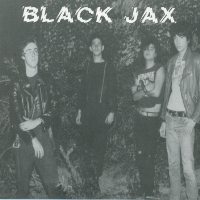 |
 |
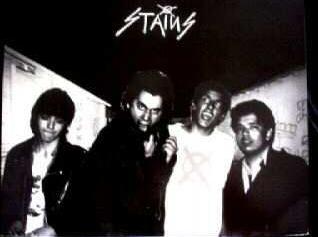 |
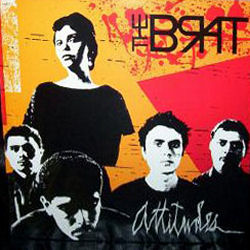 |
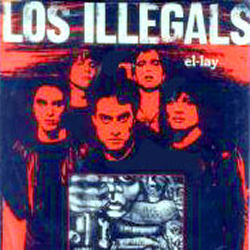 |
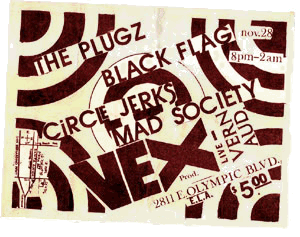 |
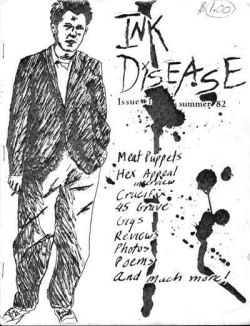 |
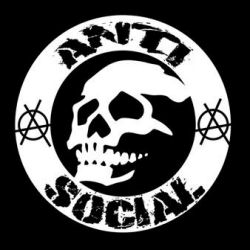 |
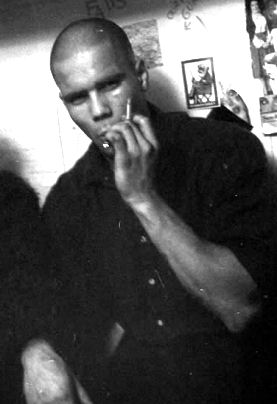 |
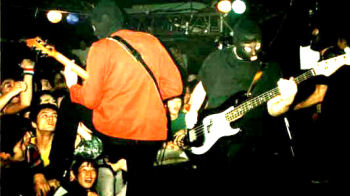 |
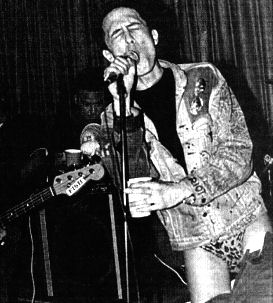 |
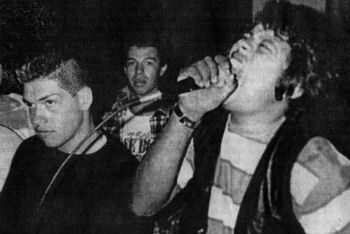 |
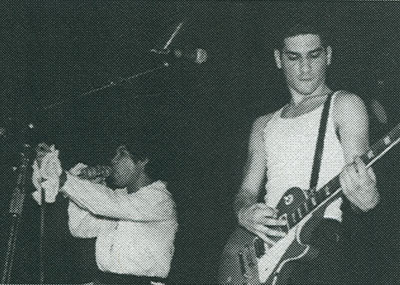 |
| (Originally published in Razorcake, Issue 3 � Aug./Sept 2001, updated Jan. 2007) |
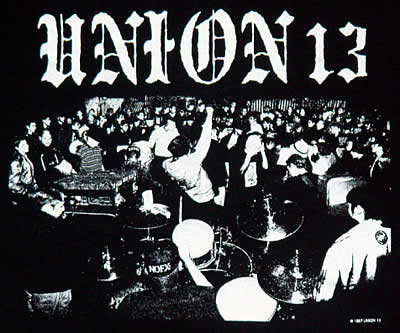 |
 |
